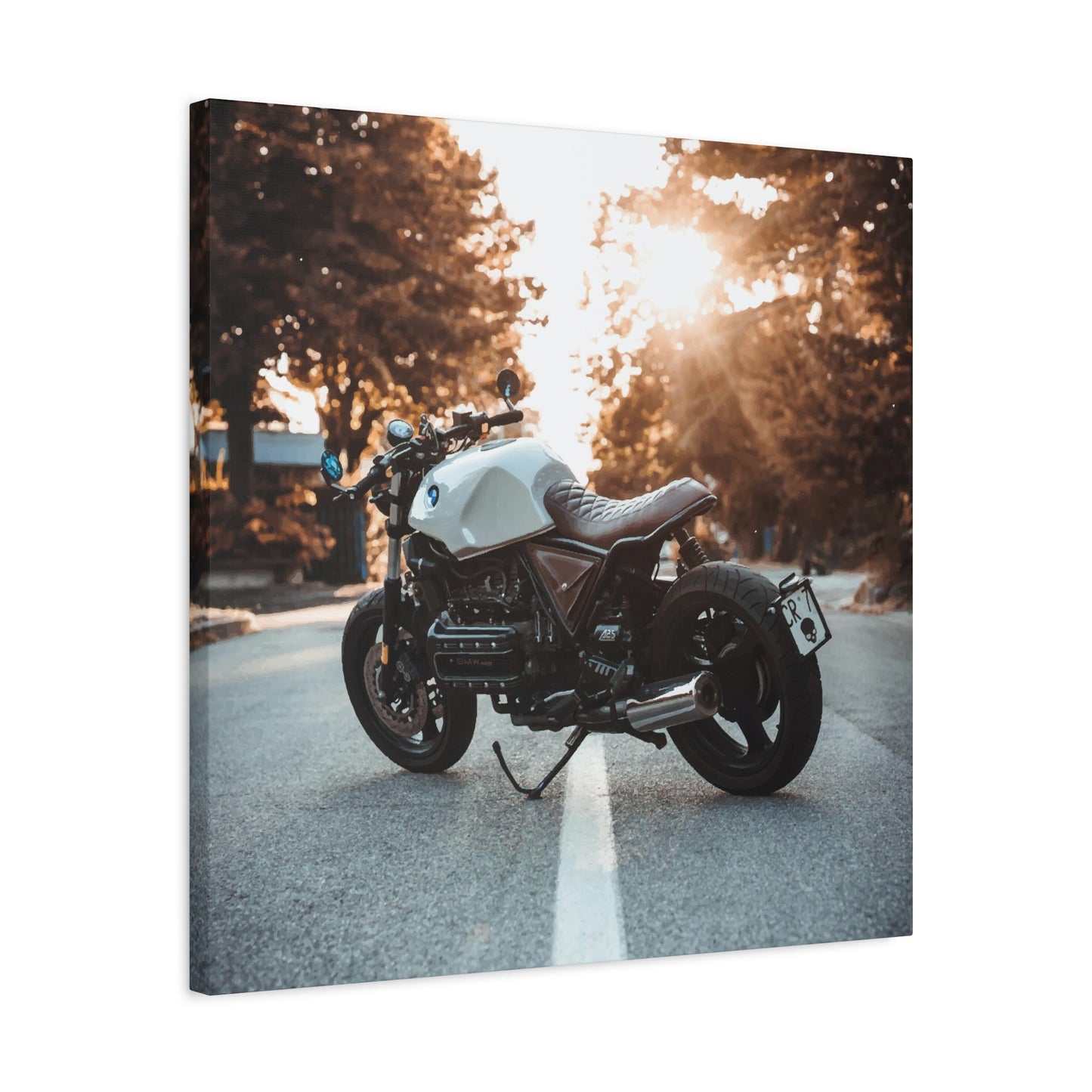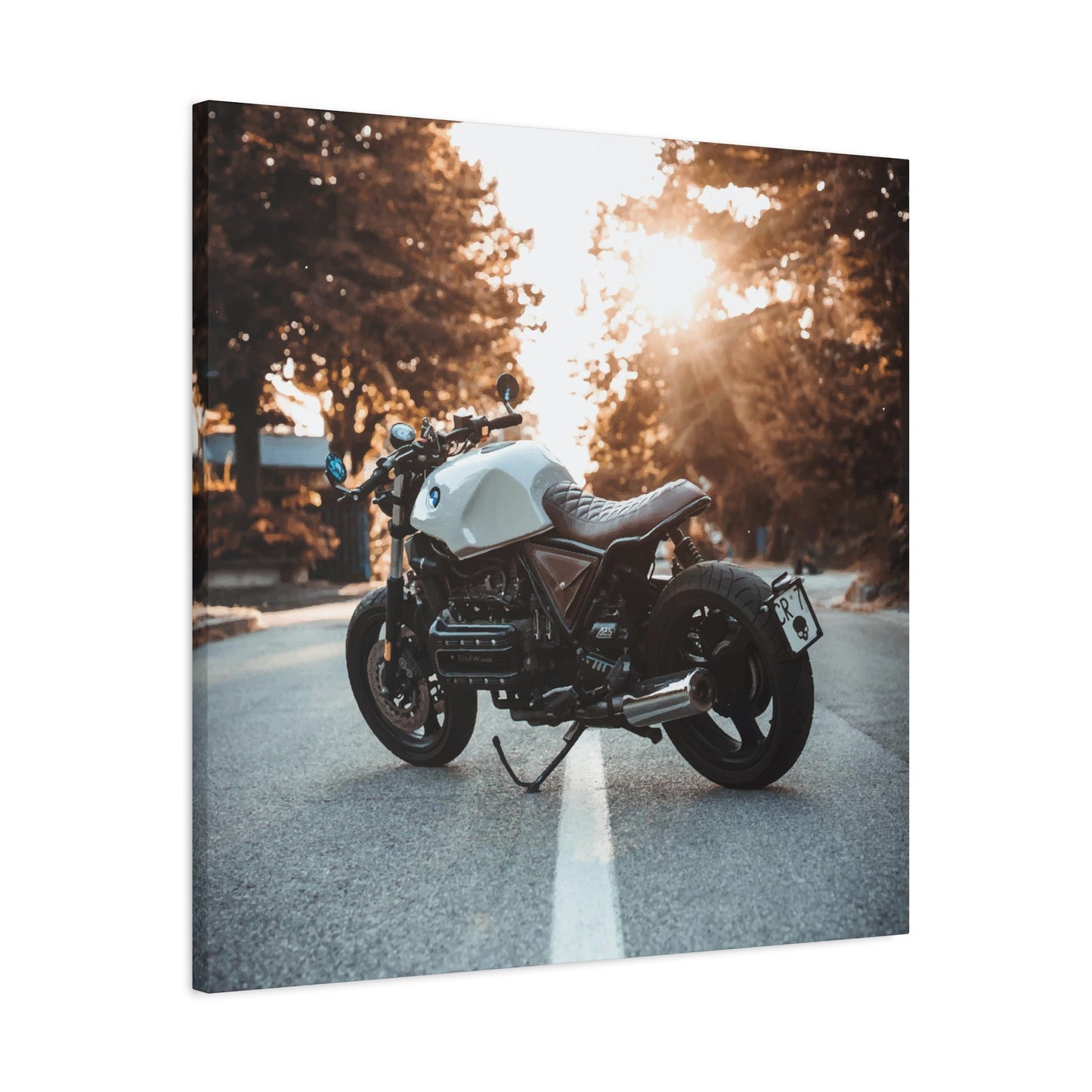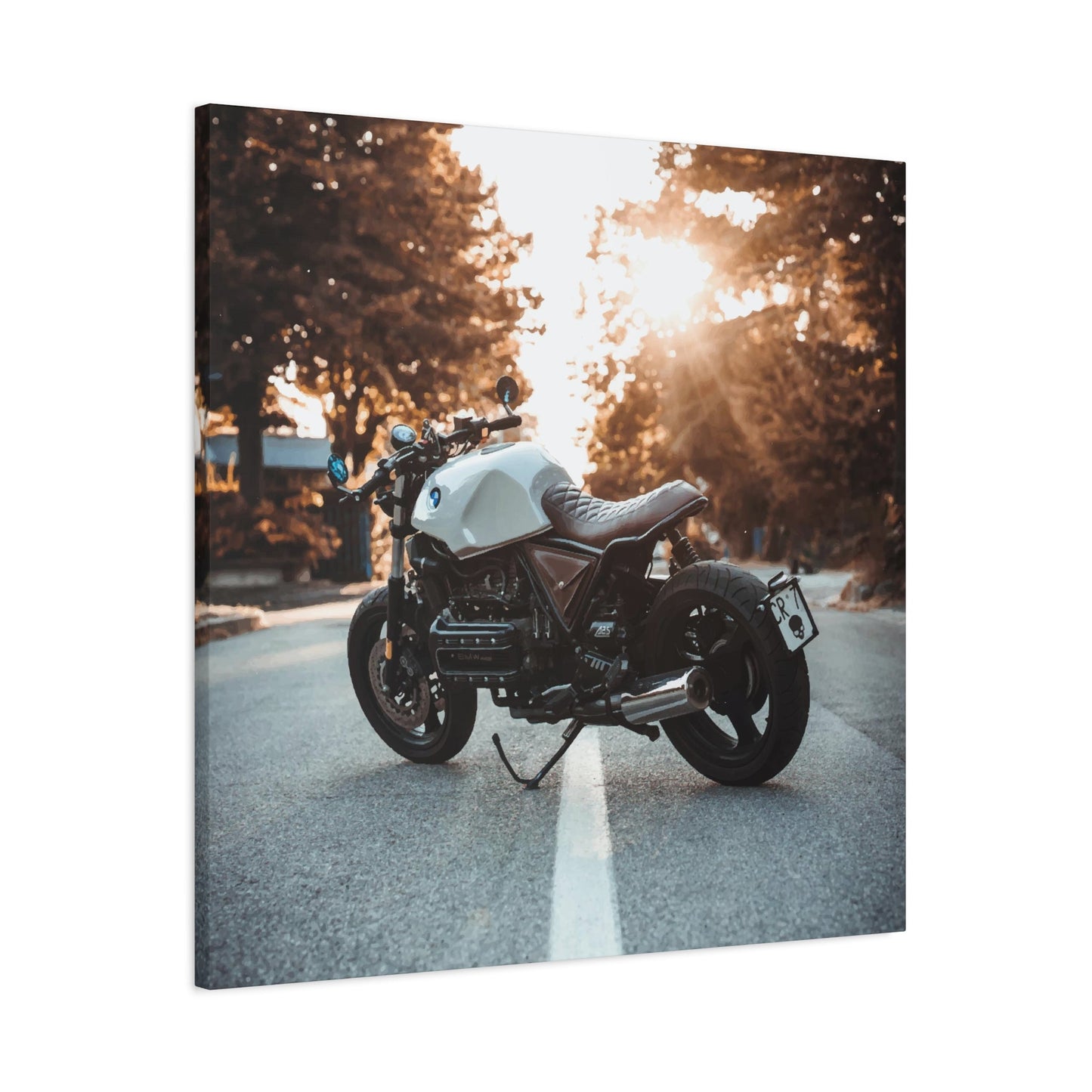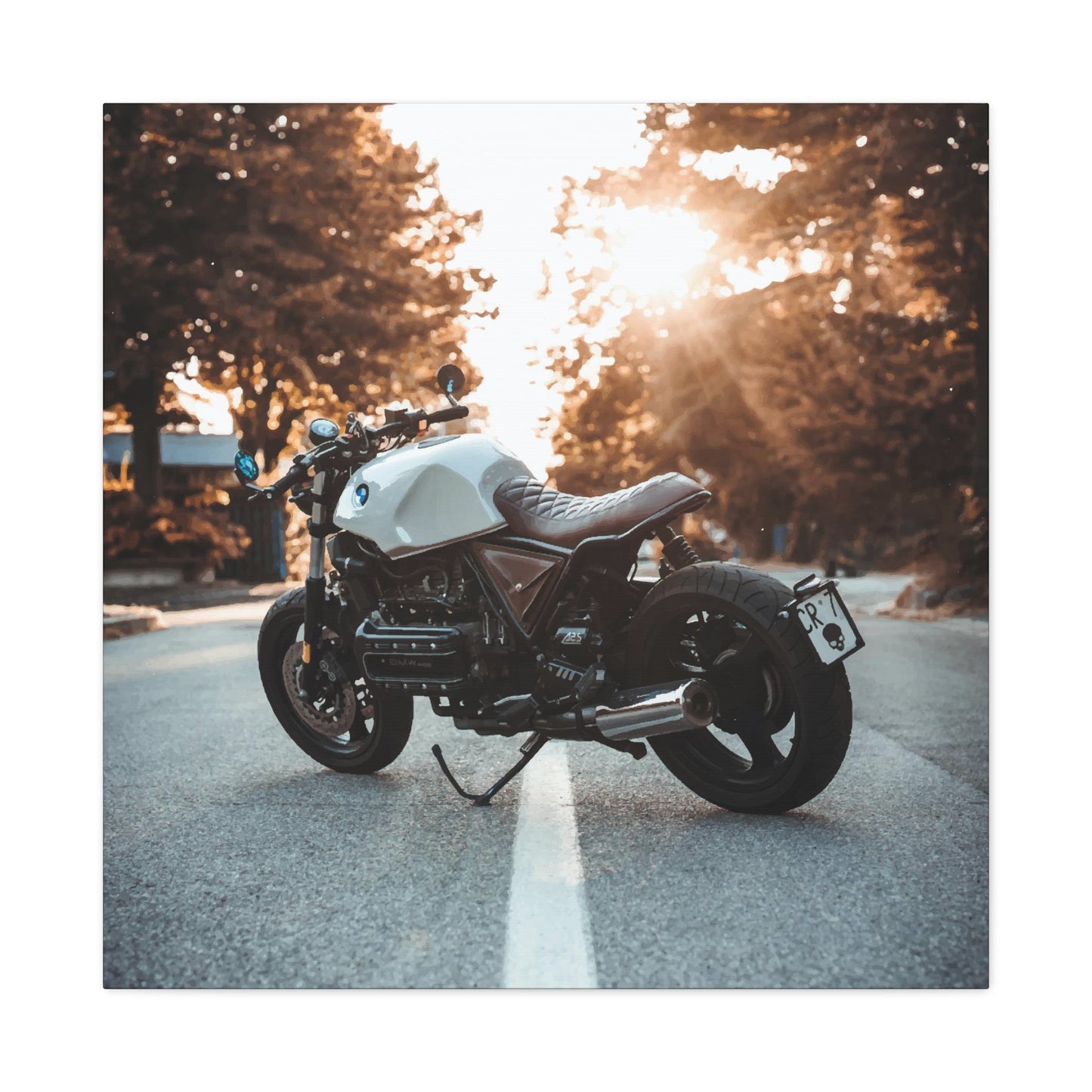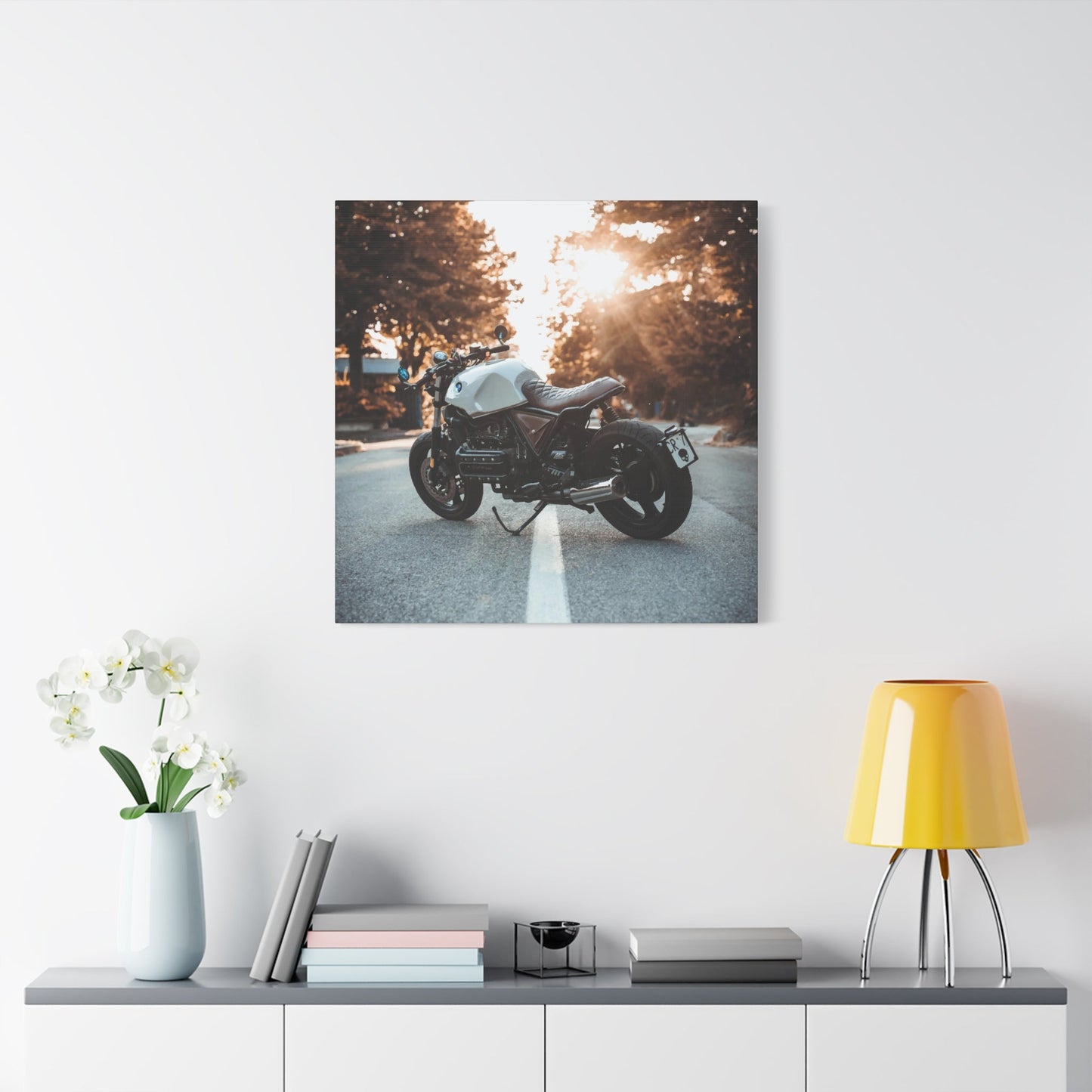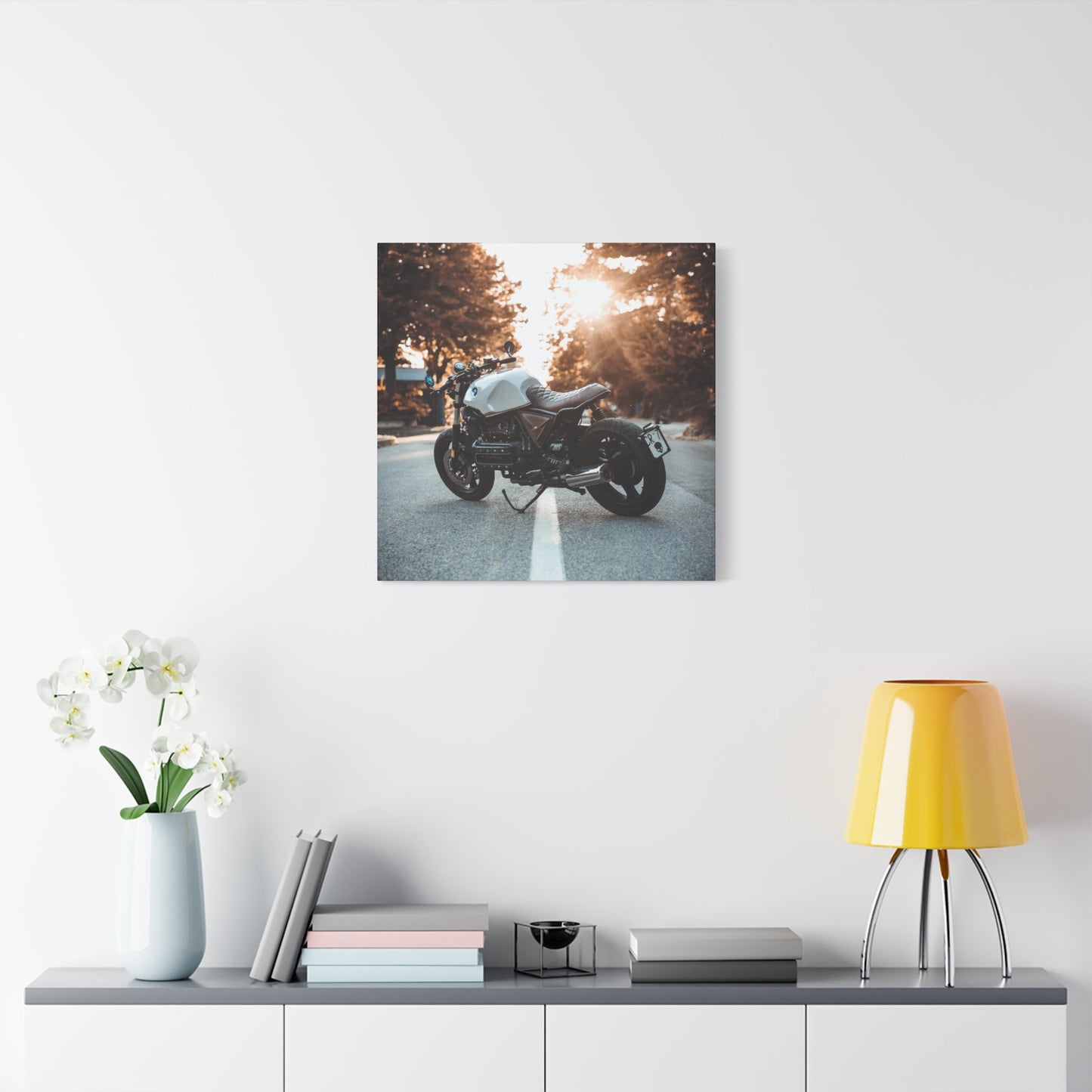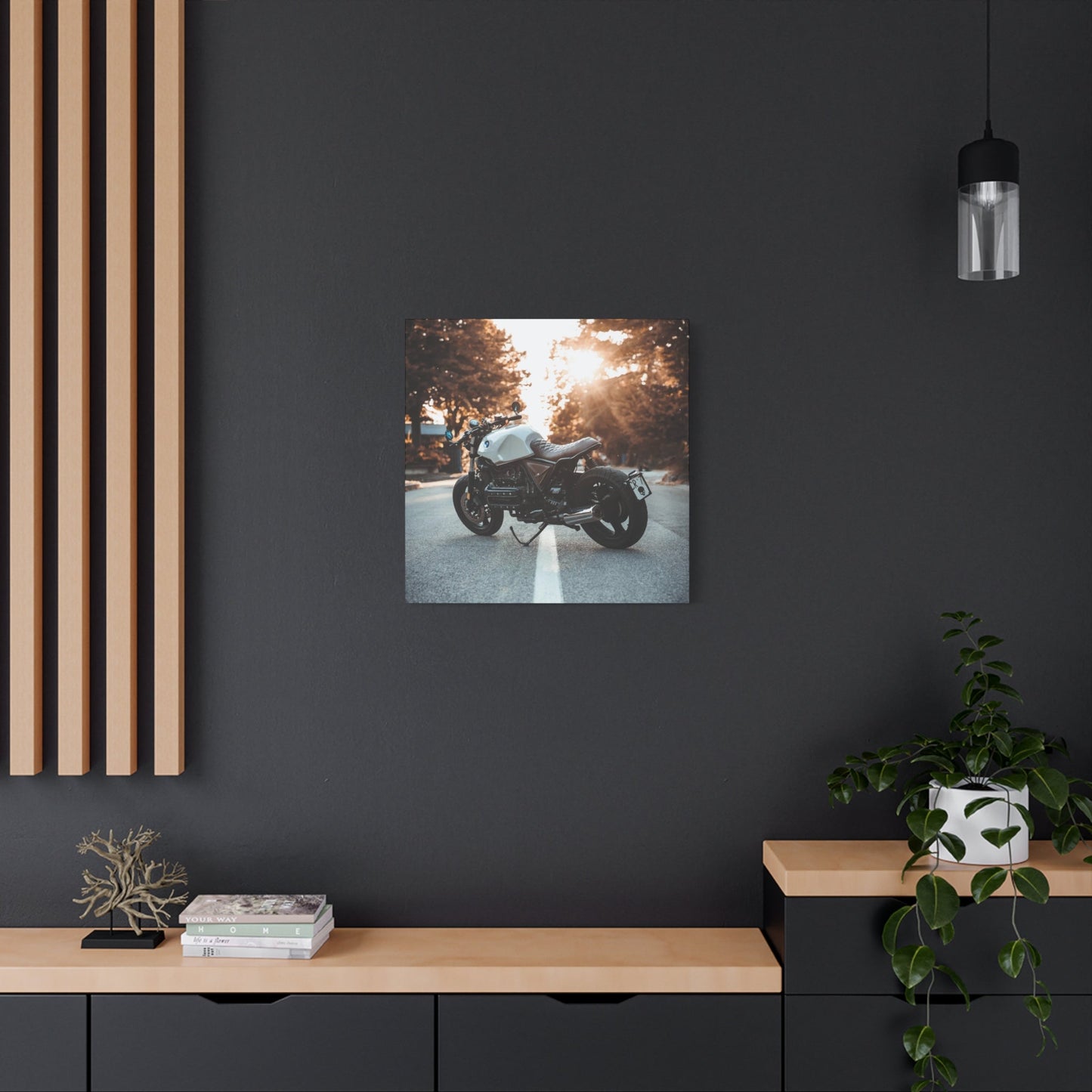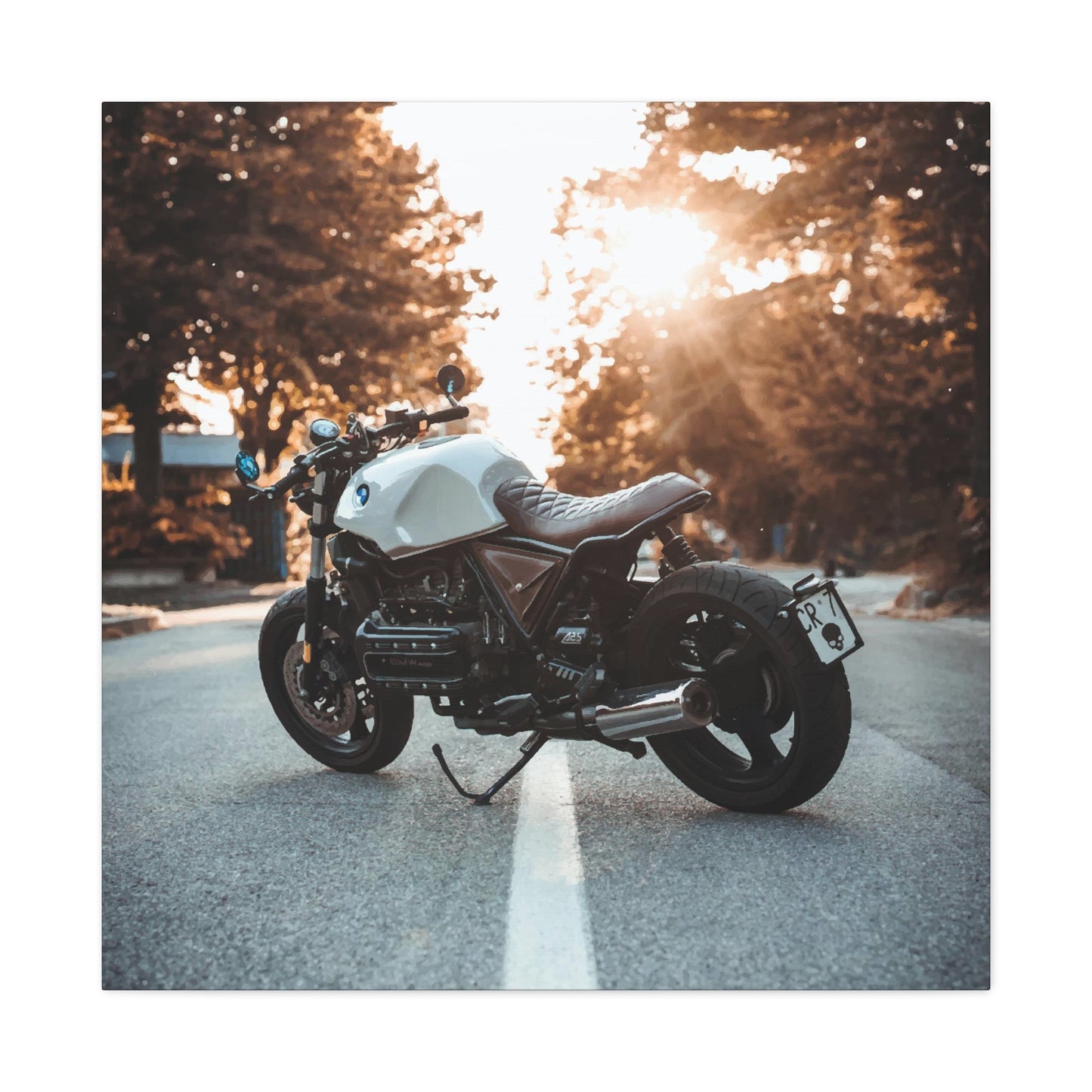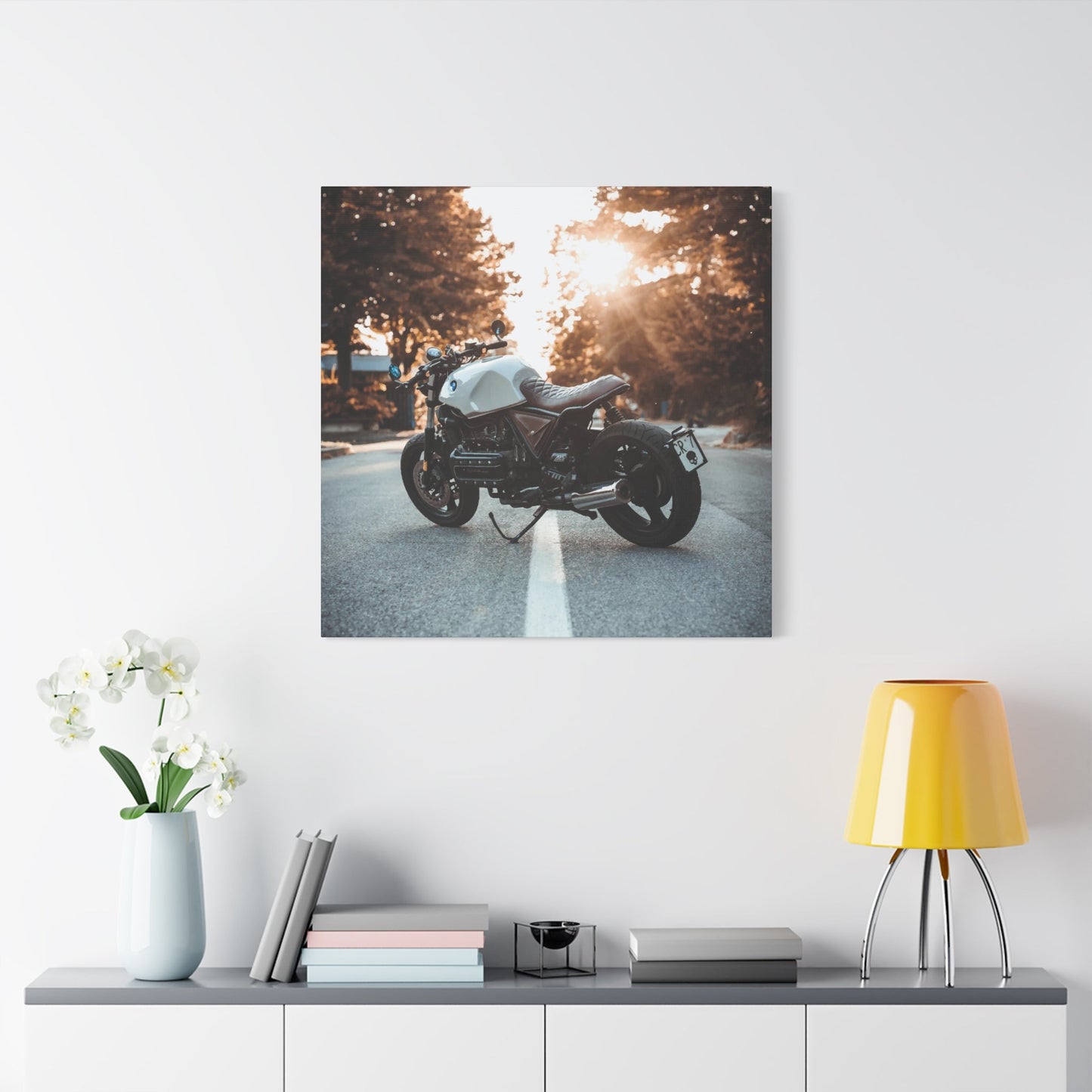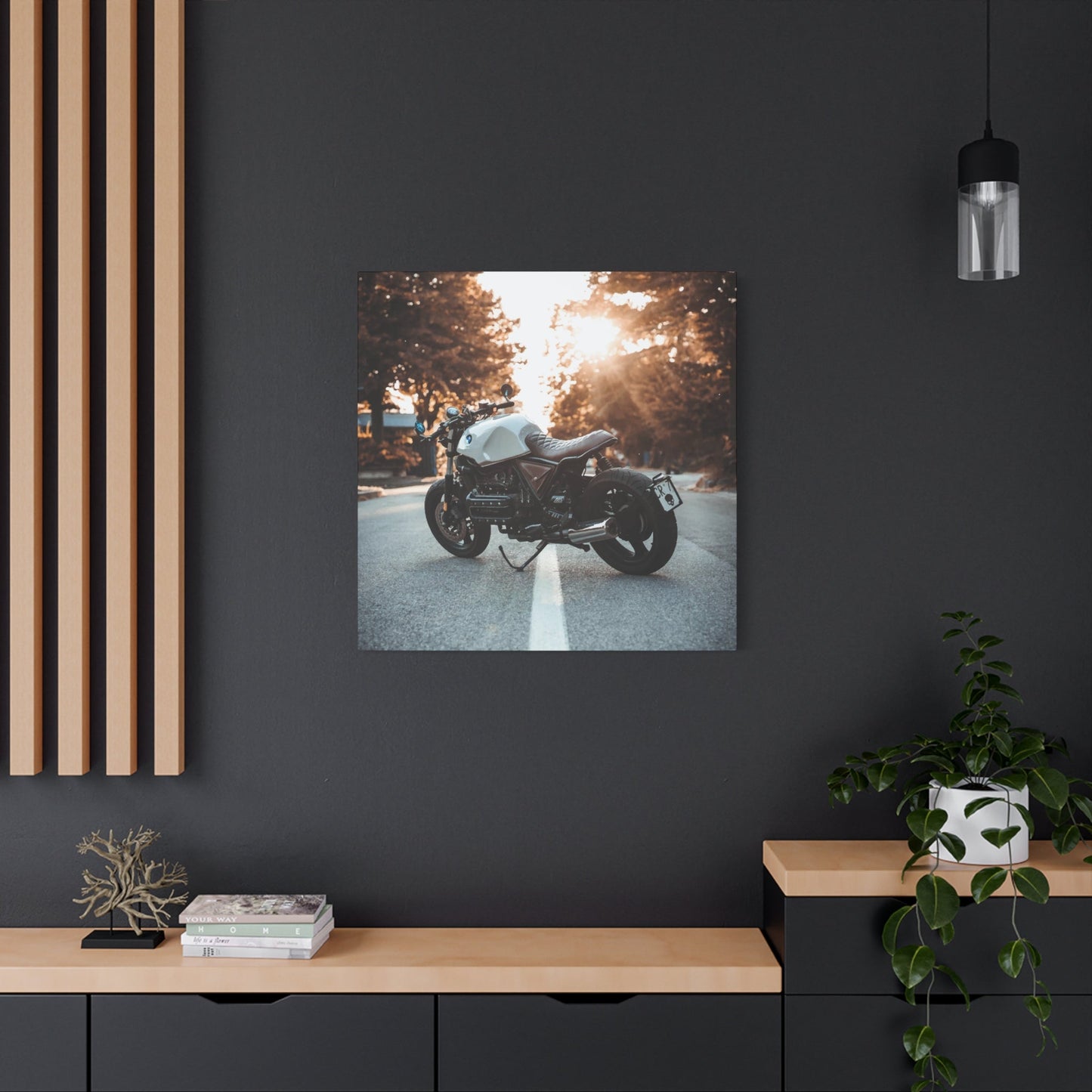Motorbike Wall Art Collection: Creative Ideas for Passionate Riders
The world of motorcycles extends far beyond the roar of engines and winding roads. For passionate riders and enthusiasts, the love for these powerful machines permeates every aspect of life, including home decoration. Motorbike-themed artwork has emerged as a sophisticated way to celebrate this passion, transforming living areas, garages, and offices into personalized sanctuaries that reflect the adventurous spirit of motorcycle culture.
The appeal of motorcycle-themed artwork lies in its versatility and emotional resonance. Whether you're drawn to the sleek lines of modern sport bikes, the rugged charm of vintage cruisers, or the rebellious spirit of choppers, there's an artistic representation that captures the essence of what makes motorcycles so captivating. This comprehensive exploration delves into sixteen distinct approaches to incorporating motorbike imagery into your surroundings, each offering unique aesthetic possibilities and creative potential.
From classic prints that honor the golden age of motorcycling to contemporary abstract interpretations that push artistic boundaries, the world of motorcycle-themed artwork offers something for every taste and setting. The beauty of this artistic genre lies not just in its visual appeal, but in its ability to evoke memories, aspirations, and the intangible sense of freedom that motorcycles represent. Whether you're a seasoned rider with decades of experience or someone who simply appreciates the mechanical beauty and cultural significance of motorcycles, these artistic expressions serve as daily reminders of adventure, craftsmanship, and the open road.
The following exploration examines various styles, techniques, and approaches to motorcycle-themed artwork, providing insights into how each can enhance different environments while reflecting personal tastes and riding philosophies. From practical considerations like framing and placement to creative DIY projects that allow for personal expression, this comprehensive guide addresses every aspect of incorporating motorcycle imagery into your personal sanctuary.
Classic Motorcycle Prints for Enthusiasts
Classic motorcycle prints represent the foundation of motorbike-themed artwork, capturing the timeless appeal of legendary machines that have shaped motorcycling history. These prints typically feature iconic models from manufacturers like Harley-Davidson, Indian, Triumph, BSA, and Norton, presented in ways that honor their mechanical beauty and historical significance. The appeal of classic motorcycle prints extends beyond mere decoration, serving as tributes to the engineering excellence and design philosophy that defined different eras of motorcycling.
The most compelling classic motorcycle prints often focus on bikes from the 1940s through 1970s, an era widely considered the golden age of motorcycle design. During this period, manufacturers were pushing the boundaries of performance while maintaining distinctive visual identities that remain instantly recognizable today. A well-executed print of a 1969 Harley-Davidson Sportster or a 1973 Honda CB750 doesn't just show a motorcycle; it captures the essence of an era when these machines represented the cutting edge of technology and design.
The artistic treatment of classic motorcycles in prints varies considerably, from highly detailed technical illustrations that showcase every component to more stylized interpretations that emphasize the bike's overall silhouette and character. Technical illustration styles are particularly popular among enthusiasts who appreciate the mechanical complexity of these machines. These prints often feature cutaway views or exploded diagrams that reveal the intricate relationship between engine components, transmission systems, and chassis elements, turning the artwork into both decoration and education.
Photographic prints of classic motorcycles offer another compelling approach, especially when they capture these machines in their natural environments or during significant moments in motorcycling history. Black and white photographs from vintage races, motorcycle shows, or street scenes provide historical context while celebrating the aesthetic beauty of classic designs. These images often evoke a sense of nostalgia and authenticity that resonates deeply with viewers who either lived through these eras or wish they had.
The quality of reproduction plays a crucial role in the effectiveness of classic motorcycle prints. High-resolution digital printing on archival paper ensures that fine details are preserved and colors remain vibrant over time. Many collectors prefer prints on heavyweight paper with matte or semi-gloss finishes that reduce glare while enhancing the richness of colors and the depth of black tones. The choice of printing substrate can significantly impact the final appearance, with options ranging from traditional photographic papers to specialized art papers designed for fine art reproduction.
For enthusiasts seeking authenticity, original vintage posters and advertisements from motorcycle manufacturers represent the pinnacle of classic motorcycle prints. These pieces, originally created for promotional purposes, now serve as valuable collectibles that combine historical significance with artistic merit. Original factory posters from companies like Ducati, BMW, or Kawasaki often feature period-appropriate typography and color schemes that perfectly complement the motorcycles they promote.
The framing and presentation of classic motorcycle prints requires careful consideration to maintain their vintage character while ensuring proper preservation. Traditional frame styles in wood tones or classic metals like brass or chrome complement the aesthetic of vintage motorcycles without overwhelming the artwork. Matting choices should enhance rather than compete with the print, with neutral tones and classic proportions working best for most classic motorcycle imagery.
Grouping classic motorcycle prints creates opportunities for storytelling through visual narrative. A collection might trace the evolution of a particular manufacturer's designs over decades, or showcase the diversity of motorcycle styles from a specific era. The key to successful grouping lies in identifying common threads while maintaining enough variety to keep the display visually interesting.
The placement of classic motorcycle prints should consider both viewing angles and thematic appropriateness. These works often look most at home in garages, workshops, dens, or other masculine-coded environments, but they can also add character to living rooms, hallways, or offices when selected and presented thoughtfully. The key is ensuring that the surrounding decor complements rather than conflicts with the vintage aesthetic of the prints.
Authentication becomes important when investing in higher-value classic motorcycle prints, particularly original factory materials or limited edition reproductions. Understanding the difference between original vintage pieces and modern reproductions helps collectors make informed decisions about their purchases while building collections that maintain or increase in value over time.
Vintage Motorbike Posters on Canvas
Canvas printing has revolutionized the presentation of vintage motorbike imagery, offering a sophisticated alternative to traditional paper prints that adds texture, durability, and gallery-worthy presence to motorcycle-themed artwork. The canvas medium particularly suits vintage motorbike posters because it evokes the artistic traditions of earlier eras while providing modern benefits like fade resistance and moisture protection.
The texture inherent in canvas printing adds dimensional quality to vintage motorbike imagery that flat paper cannot achieve. This texture interacts with light in subtle ways, creating variations in how the image appears throughout the day and under different lighting conditions. For vintage motorbike posters, this textural quality enhances the aged, authentic feeling that makes these pieces so appealing to collectors and enthusiasts.
Original vintage motorbike posters from the early to mid-20th century represent some of the most sought-after examples for canvas reproduction. These pieces often feature bold, stylized illustrations created during the golden age of poster art, when commercial artists were developing the visual languages that would define motorcycle culture for generations. Reproduction on canvas allows these historical pieces to be displayed with the dignity they deserve while protecting original works from the damage that can result from extended display.
The process of transferring vintage poster designs to canvas requires careful attention to color reproduction and detail preservation. The best reproductions maintain the bold color palettes and graphic sensibilities of the original posters while taking advantage of modern printing technology to enhance clarity and longevity. This balance between historical authenticity and contemporary quality represents one of the most appealing aspects of canvas reproductions.
European motorcycle manufacturers like Ducati, Moto Guzzi, and BMW created particularly striking vintage posters that translate beautifully to canvas format. These designs often incorporated artistic styles popular in their respective countries and eras, from Italian futurism to German bauhaus influences, creating pieces that function as both motorcycle memorabilia and examples of period graphic design.
The sizing options available with canvas printing allow vintage motorbike posters to make bold visual statements that paper prints cannot match. Large-format canvas prints of vintage posters can serve as focal points in rooms, commanding attention and setting the tone for entire decorative schemes. The ability to produce these images at substantial sizes without losing clarity or suffering from pixelation makes canvas an ideal medium for impactful presentation.
Gallery wrapping techniques used in canvas mounting eliminate the need for traditional framing while creating clean, modern presentations that let the artwork speak for itself. The wrapped edges can either continue the image around the sides of the canvas or feature solid colors that complement the main design. This frameless approach works particularly well with vintage motorbike posters that have strong graphic elements or bold backgrounds.
The durability advantages of canvas over paper become particularly important for vintage motorbike posters displayed in garages, workshops, or other environments where temperature and humidity fluctuations are common. Canvas prints resist warping, tearing, and moisture damage better than paper, making them practical choices for enthusiasts who want to display their passion in working environments.
Color saturation capabilities of modern canvas printing techniques bring new life to vintage motorbike poster designs that may have faded or lost vibrancy in their original forms. Digital restoration processes can rebuild color information while maintaining the authentic character of vintage designs, resulting in canvas prints that may actually look more vibrant than the original posters did when first created.
The emotional impact of vintage motorbike posters on canvas extends beyond their visual appeal to encompass the stories and history they represent. Many vintage posters commemorate specific races, celebrate new model introductions, or capture the excitement of motorcycling during particular eras. Canvas presentation elevates these historical documents to the level of fine art while preserving their documentary value.
Custom sizing options available with canvas printing allow vintage motorbike posters to be adapted to specific display requirements without compromising their proportions or visual impact. This flexibility is particularly valuable when working with original poster designs that may not conform to standard frame sizes or when trying to fit artwork into specific architectural contexts.
The investment value of high-quality canvas reproductions of vintage motorbike posters has increased as collectors recognize their potential for both immediate enjoyment and long-term appreciation. Limited edition canvas prints, particularly those produced with careful attention to historical accuracy and technical quality, often command premium prices and develop following among serious collectors.
Abstract Motorbike Art for Modern Settings
Abstract interpretations of motorcycle themes represent one of the most exciting frontiers in motorbike-related artwork, pushing beyond literal representations to explore the emotional and conceptual essence of motorcycling through contemporary artistic languages. This approach to motorbike art allows artists and viewers to engage with motorcycle culture on deeper levels, moving beyond the mechanical and into realms of feeling, memory, and metaphor.
The power of abstract motorbike art lies in its ability to capture intangible aspects of the motorcycling experience that photographic or realistic approaches cannot address. The sensation of speed, the feeling of freedom, the relationship between rider and machine, the integration of human and mechanical elements – these experiential qualities find natural expression through abstract artistic techniques that prioritize emotion over literal documentation.
Contemporary artists working in abstract motorbike themes often draw inspiration from the visual vocabulary of speed and motion. Flowing lines, dynamic curves, and energetic brushstrokes echo the aerodynamic forms of modern motorcycles while suggesting the movement and energy that define the riding experience. These works function as visual metaphors for the sensory overload and exhilaration that characterize motorcycle riding at its most intense.
Color plays a particularly important role in abstract motorbike art, with artists using bold palettes to evoke the emotional landscapes associated with different aspects of motorcycle culture. Hot reds and oranges might suggest the heat and power of high-performance engines, while cool blues and grays could evoke the meditative aspects of long-distance touring. The relationship between color choices and emotional content creates layers of meaning that reward extended contemplation.
Geometric abstraction offers another compelling approach to motorbike themes, with artists deconstructing motorcycle forms into essential shapes and relationships. This reductive approach can reveal underlying design principles and structural logic that might be obscured in more literal representations. Angular compositions might emphasize the mechanical precision and engineering excellence that define modern motorcycles, while organic forms could explore the human elements of motorcycle culture.
Mixed media techniques have proven particularly effective for abstract motorbike art, allowing artists to incorporate actual motorcycle components, textures, and materials into their compositions. Pieces might include elements like chain links, brake cables, tire rubber, or metal fragments, creating tactile connections to the motorcycle world while maintaining abstract compositional strategies. These material references ground abstract works in physical reality while opening up new expressive possibilities.
The scale considerations for abstract motorbike art differ significantly from those governing more literal approaches. Abstract works often benefit from generous sizing that allows viewers to become immersed in the compositional elements and emotional content. Large-scale abstract motorbike pieces can create environmental effects, transforming entire rooms through their presence and energy.
Installation possibilities for abstract motorbike art extend beyond traditional hanging arrangements to encompass three-dimensional and site-specific approaches. Abstract sculptures incorporating motorcycle themes might explore relationships between positive and negative space, while wall-mounted pieces could project into room environments in ways that engage viewers physically as well as visually.
The interpretive flexibility of abstract motorbike art makes these works suitable for diverse settings where more literal motorcycle imagery might seem inappropriate or too narrowly focused. Abstract approaches can suggest motorcycle themes while remaining open to broader readings, making them viable options for professional environments, public places, or residential settings where multiple viewers with different relationships to motorcycle culture need to coexist.
Digital art technologies have opened new frontiers for abstract motorbike expression, with computer-generated imagery allowing artists to explore impossibly complex compositions and color relationships. Digital works can incorporate multiple layers of meaning and visual information while maintaining the immediacy and emotional impact that characterize the most effective abstract art.
The collecting community for abstract motorbike art continues to expand as motorcycling culture matures and participants seek more sophisticated ways to express their passion. These works offer alternatives to traditional motorcycle memorabilia while maintaining authentic connections to motorcycle culture and values. The investment potential of quality abstract motorbike art reflects both the growing sophistication of motorcycle culture and the broader art market's recognition of motorcycle themes as legitimate subject matter.
The philosophical implications of abstract motorbike art touch on fundamental questions about the relationship between humans and machines, the nature of speed and movement, and the ways that technological objects can embody cultural values and personal identity. These deeper dimensions ensure that abstract motorbike art remains relevant and compelling even as motorcycle technology and culture continue to evolve.
Using Motorbike Artwork to Inspire Adventure
Motorcycle-themed artwork serves as more than mere decoration; it functions as a daily source of inspiration and motivation, reminding viewers of adventures taken and journeys yet to come. The psychological impact of surrounding oneself with images that evoke freedom, exploration, and adventure cannot be understated, particularly for individuals whose daily routines may not provide regular opportunities for the kind of excitement that motorcycling represents.
The inspirational power of motorbike artwork stems from its ability to connect viewers with the fundamental human desire for exploration and discovery. Images of motorcycles on winding mountain roads, traversing desert landscapes, or navigating urban environments serve as visual reminders that adventure remains possible and accessible. For office workers dreaming of weekend rides or retirees planning cross-country tours, these images maintain emotional connections to experiences that give life meaning and excitement.
Landscape-oriented motorbike artwork proves particularly effective at inspiring adventure because it combines the mechanical appeal of motorcycles with the natural beauty of destinations worth visiting. A well-composed image of a touring bike beside an alpine lake or a sport bike navigating coastal curves doesn't just show a motorcycle; it presents a complete vision of the adventurous lifestyle that motorcycling makes possible.
The seasonal aspects of motorcycling find natural expression in artwork that captures motorcycles in different weather conditions and geographic settings. Images showing bikes cutting through autumn leaves, navigating snowy mountain passes, or basking in desert sunshine remind viewers that adventure opportunities exist throughout the year and across diverse environments. This variety helps maintain inspiration across changing seasons and personal circumstances.
Action photography represents one of the most immediately inspiring forms of motorbike artwork, capturing moments of dynamic movement that convey the excitement and skill involved in motorcycling. Images of bikes leaning into curves, launching over jumps, or powering through challenging terrain create visceral connections to the physical sensations of riding while demonstrating the capabilities that make motorcycles such effective adventure vehicles.
Historical adventure imagery connects contemporary viewers with the rich tradition of motorcycle exploration and discovery. Photographs or artistic interpretations of early transcontinental rides, vintage racing events, or pioneering adventure tours provide historical context while inspiring modern adventurers to continue pushing boundaries and exploring new possibilities.
The placement strategy for inspirational motorbike artwork should consider natural viewing patterns and daily routines. Positioning compelling adventure images where they'll be seen regularly – near work areas, along frequently traveled hallways, or in morning routine locations – maximizes their motivational impact while integrating adventure inspiration into everyday life.
Personal connection enhances the inspirational value of motorbike artwork significantly. Images that remind viewers of their own adventures, represent destinations on their bucket lists, or showcase bikes similar to ones they own or aspire to own create stronger emotional resonances than generic motorcycle imagery. This personal relevance transforms artwork from passive decoration into active motivation.
The aspirational aspects of adventure-inspiring motorbike artwork extend beyond immediate riding goals to encompass broader life philosophies about risk-taking, exploration, and personal growth. Motorcycles represent tools for self-discovery and challenge-seeking, and artwork that captures these deeper meanings can inspire viewers to approach various aspects of life with more adventurous attitudes.
Group dynamics around adventure-inspiring motorbike artwork create opportunities for sharing experiences and planning future adventures. When friends or family members view compelling motorcycle imagery together, conversations naturally turn to past rides, future trips, and shared adventure goals. The artwork becomes a catalyst for community building around shared interests and values.
Digital displays offer new possibilities for adventure-inspiring motorbike artwork, allowing collections to rotate through different images and seasonal themes. Electronic frames can showcase vast libraries of motorcycle adventure imagery, ensuring that inspiration remains fresh and relevant to current goals and circumstances.
The therapeutic benefits of adventure-inspiring motorbike artwork extend to individuals who may not currently be able to ride due to injury, age, or other circumstances. These images can maintain connections to the motorcycling community and adventure lifestyle while providing hope and motivation for future participation when conditions permit.
The commercial applications of adventure-inspiring motorbike artwork in businesses related to motorcycling – dealerships, repair shops, gear retailers – help create environments that support customer dreams and aspirations while building emotional connections to products and services. This inspirational element transforms transactional relationships into shared adventures.
Large-Scale Motorcycle Canvas Prints
Large-scale motorcycle canvas prints represent the pinnacle of impactful motorbike artwork, transforming living and working environments through their commanding presence and immersive visual experiences. The psychological and aesthetic effects of oversized motorcycle imagery create focal points that don't just decorate rooms but define their character and establish clear statements about the occupant's interests and values.
The technical considerations involved in producing high-quality large-scale motorcycle canvas prints require sophisticated printing equipment and careful attention to image resolution, color management, and substrate selection. Source images must possess sufficient resolution to maintain clarity and detail when expanded to poster size or larger, while printing systems must be capable of reproducing fine details and subtle color gradations across substantial surface areas.
The visual impact of large-scale motorcycle canvas prints depends heavily on composition and subject selection. Images that work well at small sizes may not translate effectively to large formats, while compositions specifically designed for large-scale presentation can create dramatic effects that smaller prints cannot achieve. Dynamic angles, bold compositions, and strong contrast relationships become even more important when working with substantial dimensions.
Room proportion relationships play crucial roles in the successful integration of large-scale motorcycle canvas prints. Understanding how oversized artwork interacts with ceiling heights, wall lengths, and furniture arrangements ensures that large prints enhance rather than overwhelm their environments. The goal is creating visual harmony while maintaining the dramatic impact that motivates choosing large-scale formats in the first place.
The production costs associated with large-scale motorcycle canvas prints reflect both the materials involved and the technical expertise required for quality execution. However, the cost-per-square-inch often decreases as print sizes increase, making large formats surprisingly economical for maximum visual impact. The investment in a single large piece often provides better value than multiple smaller works while creating more dramatic effects.
Installation requirements for large-scale motorcycle canvas prints extend beyond simple hanging to encompass structural considerations, especially for very large pieces that may require specialized mounting hardware. Wall anchoring systems must account for the weight and size of large canvases while ensuring secure attachment that protects both artwork and viewers. Professional installation may be advisable for the largest formats.
The lighting considerations for large-scale motorcycle canvas prints become more complex as artwork size increases. Larger pieces require more sophisticated lighting strategies to ensure even illumination across their entire surface while avoiding glare or hot spots that can interfere with viewing. Track lighting, picture lights, or architectural lighting solutions may be necessary for optimal presentation.
The emotional impact of large-scale motorcycle canvas prints relates to their ability to create immersive experiences that smaller works cannot match. Viewers can lose themselves in detailed imagery when prints reach substantial sizes, creating psychological effects similar to those experienced when viewing the actual motorcycles or scenes depicted. This immersive quality transforms artwork from decoration into experience.
The subject matter selection for large-scale motorcycle canvas prints benefits from dynamic compositions that can support extended viewing without becoming boring or repetitive. Action shots, dramatic angles, and complex compositions work particularly well at large scales, while simple or static images may not provide enough visual interest to justify substantial dimensions.
The framing alternatives for large-scale motorcycle canvas prints often favor frameless gallery-wrap presentations that allow artwork to make maximum impact without additional visual elements competing for attention. When frames are used, they must be proportionally substantial enough to support large-scale imagery without appearing inadequate or overwhelmed by the artwork they contain.
The architectural integration of large-scale motorcycle canvas prints requires considering how these pieces interact with building elements like doorways, windows, and built-in features. Strategic placement can create dramatic reveals or establish visual relationships with architectural elements that enhance both the artwork and the surrounding environment.
The maintenance requirements for large-scale motorcycle canvas prints include dust management across substantial surface areas and occasional cleaning that may require specialized techniques or equipment. The accessibility of all areas of large prints for maintenance purposes should be considered during installation planning to ensure long-term preservation of image quality.
The collecting implications of large-scale motorcycle canvas prints involve storage and transportation challenges that don't affect smaller works. However, the impact and presence of truly large motorcycle prints often justify these practical considerations, particularly for serious enthusiasts seeking to create environments that fully express their passion for motorcycling culture.
Framing Techniques for Motorbike Art
The selection and application of appropriate framing techniques can dramatically enhance the presentation and preservation of motorbike artwork while ensuring that decorative elements support rather than compete with the imagery they contain. Professional framing approaches consider multiple factors including artwork medium, display environment, aesthetic goals, and conservation requirements to create presentations that maximize both visual impact and long-term preservation.
Traditional framing approaches for motorbike art often emphasize materials and styles that complement the industrial aesthetic associated with motorcycle culture. Metal frames in finishes like brushed aluminum, black steel, or chrome create visual connections to motorcycle components while providing clean, contemporary presentations that don't overwhelm artwork. The choice between matte and glossy metal finishes should consider both the character of individual artworks and the lighting conditions in display environments.
Wood framing options for motorbike art range from rustic barn wood that evokes garage and workshop environments to sleek hardwoods that provide more sophisticated presentations. The grain patterns, colors, and finishes of wood frames should complement rather than compete with artwork, with darker woods often working well with high-contrast motorcycle imagery while lighter woods can enhance more subtle or colorful pieces.
Matting decisions play crucial roles in framing motorbike art effectively, creating visual breathing room around images while providing color and textural transitions between artwork and frames. Neutral mat colors like black, white, and various grays provide safe choices that work with most motorcycle imagery, while colored mats can enhance specific elements within artworks or create thematic connections to motorcycle brands or personal preferences.
The proportional relationships between artwork, matting, and frames require careful consideration to achieve balanced presentations that enhance rather than overwhelm motorbike imagery. Oversized mats can make small prints appear lost within their frames, while insufficient matting can create cramped presentations that don't allow artwork adequate visual space. Professional framers use mathematical relationships and visual judgment to achieve optimal proportions.
Conservation framing techniques become particularly important for valuable or irreplaceable motorbike artwork, including original posters, vintage photographs, or limited edition prints. Acid-free materials, UV-protective glazing, and climate-controlled environments help preserve artwork for future generations while maintaining its visual appeal and monetary value. These conservation measures often prove cost-effective over long periods by preventing deterioration that could require expensive restoration.
Glazing options for framed motorbike art include regular glass, non-reflective glass, acrylic sheets, and specialized UV-filtering materials. The choice depends on factors like artwork value, display lighting conditions, and handling requirements. Non-reflective options reduce glare problems in brightly lit environments, while UV-filtering glazing provides protection against fading and deterioration from light exposure.
Custom framing solutions allow for creative presentations that standard framing options cannot achieve. Shadow boxes can incorporate three-dimensional elements related to motorcycles, while floating frames create the illusion that artwork hovers within the frame opening. These specialized techniques work particularly well with motorcycle themes because they can reference the mechanical and industrial aspects of motorcycle culture.
The installation hardware for framed motorbike art must account for frame weight, wall types, and seismic considerations in earthquake-prone areas. Heavy frames require appropriate wall anchors and hanging systems, while valuable artwork may benefit from security hanging hardware that prevents easy removal. The visibility of hanging hardware should be minimized to maintain clean presentations.
Group framing strategies for collections of motorbike art involve coordinating multiple pieces to create cohesive presentations while maintaining individual artwork integrity. Consistent frame styles can unify diverse images, while varied framing can add visual interest to similar pieces. The spacing between grouped frames follows mathematical principles that create pleasing visual relationships.
The budget considerations for framing motorbike art can vary dramatically depending on artwork value, framing complexity, and material choices. Cost-effective approaches might use standard frame sizes and basic materials, while premium framing for valuable pieces justifies investment in custom work and conservation materials. Understanding the relationship between framing costs and artwork value helps guide appropriate investment levels.
Maintenance requirements for framed motorbike art include periodic cleaning of glazing surfaces, inspection of frame integrity, and monitoring of environmental conditions that could affect artwork preservation. Proper maintenance extends both the life of artwork and the effectiveness of framing investments while ensuring continued visual appeal.
The aesthetic evolution of framing styles for motorbike art reflects broader trends in both interior design and motorcycle culture. Contemporary approaches often favor cleaner, more minimal presentations that let artwork speak for itself, while traditional approaches might emphasize ornate frames that create more formal presentations. Understanding these trends helps ensure that framing choices remain relevant over time.
Iconic Motorbike Models in Home Decoration
The incorporation of specific iconic motorcycle models into home decoration creates opportunities for celebrating particular machines that have achieved legendary status within motorcycling culture. These motorcycles transcend their roles as mere transportation to become symbols of design excellence, technological innovation, and cultural significance that resonate with enthusiasts and casual observers alike.
The Harley-Davidson Sportster, introduced in 1957, represents one of the most recognizable and continuously produced motorcycle designs in history. Artwork featuring Sportsters captures the essence of American motorcycle culture while celebrating a design that has remained fundamentally consistent through decades of evolution. The distinctive peanut tank, low-slung profile, and V-twin engine configuration create instantly recognizable silhouettes that work effectively in various artistic interpretations.
The Honda CB750, launched in 1969, revolutionized motorcycling by introducing affordable superbike performance to the masses while establishing Japanese manufacturers as serious competitors to European and American brands. Artistic representations of the CB750 often emphasize its clean, functional design and groundbreaking four-cylinder engine configuration. The bike's historical significance as the machine that democratized high-performance motorcycling adds cultural weight to decorative applications.
The Ducati 916, designed by Massimo Tamburini and produced from 1994 to 1998, represents the pinnacle of Italian motorcycle artistry and engineering excellence. The bike's sculptural bodywork, innovative trellis frame, and distinctive single-sided swingarm create visually striking elements that translate beautifully into artistic representations. Artwork featuring the 916 often emphasizes its racing pedigree and the emotional passion associated with Italian motorcycle culture.
The BMW R90S, produced in the mid-1970s, established BMW as a manufacturer of sporting motorcycles while introducing the distinctive "flying brick" aesthetic that would influence decades of BMW design. The bike's unique blend of touring practicality and sporting performance, combined with its distinctive color schemes and aerodynamic bodywork, creates rich material for artistic interpretation that appeals to both touring enthusiasts and design aficionados.
The Triumph Bonneville, originally produced from 1959 to 1983 and revived in 2001, embodies the classic British motorcycle aesthetic that defined an era of motorcycling culture. The bike's simple, elegant lines and traditional twin-cylinder configuration represent timeless design principles that continue to influence contemporary motorcycle development. Artistic representations of Bonnevilles often emphasize their connection to 1960s counterculture and rock and roll.
The Yamaha RD350, produced throughout the 1970s and early 1980s, represents the pinnacle of two-stroke motorcycle development and introduced many riders to high-performance motorcycling. The bike's aggressive styling, distinctive exhaust note, and impressive power-to-weight ratio created lasting impressions that continue to resonate with enthusiasts. Artwork featuring RD350s often captures the excitement and slightly dangerous character that made these machines so appealing.
The Indian Chief, particularly models from the 1940s and 1950s, represents American motorcycle manufacturing at its most distinctive and culturally significant. The Chief's flowing fender lines, distinctive headlight nacelle, and imposing presence created an aesthetic that remains instantly recognizable decades after production ended. Artistic interpretations often emphasize the bike's connection to American motorcycle heritage and its role in establishing motorcycling as a distinctly American pursuit.
The Kawasaki Z1, introduced in 1972, established Kawasaki's reputation for building powerful, aggressive motorcycles while setting new standards for superbike performance. The bike's angular styling, massive four-cylinder engine, and reputation for speed created an image that continues to influence motorcycle design and culture. Artwork featuring Z1s often emphasizes their raw power and the technological advancement they represented.
The Moto Guzzi Le Mans, produced from 1976 to 1993, represents Italian engineering excellence and distinctive design philosophy. The bike's transverse V-twin engine, shaft drive, and aggressive sporting stance created a unique personality that distinguished it from contemporary competitors. Artistic representations often emphasize the bike's mechanical beauty and its connection to Italian racing tradition.
The Vincent Black Shadow, produced from 1948 to 1955, represents the ultimate development of pre-war motorcycle engineering and established performance benchmarks that wouldn't be exceeded for decades. The bike's distinctive cantilever rear suspension, powerful V-twin engine, and striking black finish created an mystique that persists among collectors and enthusiasts. Artwork featuring Vincent motorcycles often emphasizes their engineering sophistication and legendary performance capabilities.
The selection of specific iconic motorcycle models for decorative purposes should consider personal connections, aesthetic preferences, and the cultural significance of particular machines. The most effective decorative applications often focus on motorcycles that have personal meaning for the viewer while possessing sufficient visual interest and cultural recognition to engage broader audiences.
The presentation techniques for iconic motorcycle model artwork can range from highly detailed technical illustrations that celebrate mechanical complexity to stylized interpretations that emphasize emotional and cultural content. The choice of artistic approach should complement both the character of specific motorcycles and the decorative context in which artwork will be displayed.
Black and White Motorbike Photography
Black and white photography possesses unique capabilities for capturing and presenting motorcycle subjects, stripping away color distractions to reveal essential forms, textures, and emotional content that might be obscured in color imagery. The monochromatic approach to motorcycle photography has roots in the early decades of motorcycling, when black and white film dominated documentation, creating a visual vocabulary that continues to influence contemporary motorcycle imagery.
The aesthetic power of black and white motorcycle photography lies in its ability to emphasize the sculptural qualities of motorcycle design while creating dramatic contrasts that enhance visual impact. The interplay between light and shadow becomes more pronounced in monochromatic imagery, allowing photographers to use lighting as a primary compositional element. Chrome and polished metal surfaces create brilliant highlights, while matte black components absorb light to create deep shadows that define form and add dimensionality.
Technical considerations for effective black and white motorcycle photography extend beyond simple color removal to encompass specialized approaches to contrast management, tonal range optimization, and texture enhancement. The most successful black and white motorcycle images often require careful attention to lighting ratios, exposure settings, and post-processing techniques that maximize the medium's expressive potential while maintaining realistic representation of motorcycle subjects.
The historical significance of black and white motorcycle photography connects contemporary work to the golden age of motorcycle journalism and documentation. Classic motorcycle magazines, race photography, and manufacturer promotional materials established visual conventions that continue to influence how motorcycles are perceived and represented. Modern black and white motorcycle photography can reference these historical precedents while exploring contemporary artistic possibilities.
Portrait applications of black and white motorcycle photography often focus on the relationship between riders and their machines, using monochromatic treatment to emphasize emotional content over superficial details. The removal of color information encourages viewers to focus on facial expressions, body language, and the subtle interactions between human and mechanical elements. These intimate portraits can reveal aspects of motorcycle culture that color photography might not capture as effectively.
Action photography in black and white requires different approaches than color work, with photographers relying on contrast, motion blur, and compositional elements to convey speed and excitement. The absence of color information places greater emphasis on timing, framing, and the ability to capture decisive moments that tell complete stories through visual elements alone. Successful black and white action photography often possesses timeless qualities that transcend specific eras or trends.
The printing considerations for black and white motorcycle photography involve choices between different paper types, contrast grades, and finishing techniques that can dramatically affect final image appearance. Traditional silver gelatin printing methods create rich tonal ranges and archival permanence that digital printing struggles to match, while modern digital techniques offer consistency and convenience that appeal to contemporary photographers and collectors.
Environmental contexts for black and white motorcycle photography can range from stark studio settings that isolate subjects against neutral backgrounds to complex outdoor scenes that integrate motorcycles into broader compositional frameworks. The choice of environment should support the artistic goals of individual images while considering how monochromatic treatment will affect the relationship between subject and surroundings.
The emotional impact of black and white motorcycle photography often exceeds that of color work because the simplified palette encourages viewers to engage with content rather than being distracted by color relationships. This emotional directness makes black and white motorcycle photography particularly effective for storytelling applications and artistic expressions that prioritize mood and atmosphere over documentary accuracy.
Vintage styling applications of black and white motorcycle photography can create authentic period feel or nostalgic interpretations of contemporary subjects. The monochromatic treatment naturally references earlier eras of photography while allowing modern subjects to be presented with timeless aesthetic qualities. This approach works particularly well with classic or vintage-styled motorcycles that already possess period character.
The commercial applications of black and white motorcycle photography extend from advertising and marketing materials to fine art sales and gallery exhibitions. The sophisticated aesthetic of quality black and white work often commands higher prices and greater respect than color photography, reflecting the technical skill and artistic vision required for effective monochromatic imagery.
Gallery presentation of black and white motorcycle photography benefits from careful attention to lighting, matting, and framing choices that complement the monochromatic aesthetic while providing appropriate visual support. The absence of color in the photographs places greater emphasis on presentation elements, making thoughtful curation and display crucial for maximum impact.
The collecting market for black and white motorcycle photography continues to grow as both motorcycling culture and photography markets mature. Limited edition prints, particularly those by recognized photographers or featuring significant historical subjects, often appreciate in value while providing immediate aesthetic pleasure for collectors and enthusiasts.
Colorful Motorbike Paintings for Vibrant Settings
Vibrant, colorful motorbike paintings offer an exuberant and dynamic approach to motorcycle-themed artwork, capturing the energy, excitement, and visual richness that define motorcycle culture. Rather than simply documenting the mechanical details of bikes or the reality of riding, these paintings dive deeper into the emotional and sensory experiences that motorcycling inspires.
Through bold, vivid color palettes, these artworks evoke the rush of adrenaline, the freedom of the open road, and the unique personality of each bike and rider. Bright reds, electric blues, fiery oranges, and glowing yellows combine to create compositions that feel alive and pulsating with movement. The colors don’t just decorate the canvas—they tell a story, conveying the thrill, passion, and individuality inherent in motorbike culture.
Ideal for vibrant interior settings—whether in modern urban spaces, creative studios, or energetic social venues—these paintings add a striking visual impact and a sense of motion and freedom. They invite viewers to experience the sensory intensity of motorcycling, transforming a simple image of a motorbike into a celebration of lifestyle and spirit.
By moving beyond literal representation and embracing an artistic exploration of emotion and sensation, colorful motorbike paintings bring a fresh, lively perspective to the genre. They capture not just the machines themselves but the soul of the ride, making them perfect for anyone who appreciates art that energizes and inspires.
Conclusion
The motorbike wall art collection offers passionate riders an exciting opportunity to celebrate their love for the open road through creative and personalized décor. Whether you’re a fan of classic cruisers, sleek sportbikes, or vintage motorcycles, incorporating motorbike-themed art into your space can express your passion and add a dynamic edge to your home or garage. These pieces serve as more than decoration—they capture the spirit of freedom, adventure, and adrenaline that defines motorcycling culture.
Creative motorbike wall art comes in a variety of styles, from detailed photographic prints and bold graphic illustrations to abstract designs that evoke speed and motion. This diversity allows riders to find the perfect artwork that resonates with their personal taste and riding style. Whether displayed as a striking focal point or part of a curated gallery wall, motorbike art energizes your space and tells a story of passion and journey.
Moreover, motorbike wall art offers versatile decorating possibilities. It pairs well with industrial, modern, and rustic interiors, and can be combined with memorabilia such as vintage helmets, license plates, or riding gear to create a truly immersive environment. For those who love DIY projects, customizing or even creating your own motorbike-themed artwork adds an extra layer of personal connection.
Ultimately, a motorbike wall art collection is a powerful way to honor your riding lifestyle while enhancing your surroundings with creativity and style. It transforms your walls into a tribute to the thrill of the ride and the open road, inspiring you daily and fueling your passion for motorcycling. Whether for a personal sanctuary or a social space, motorbike art brings energy, personality, and a sense of adventure wherever it’s displayed.













